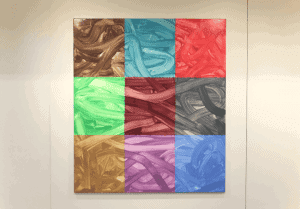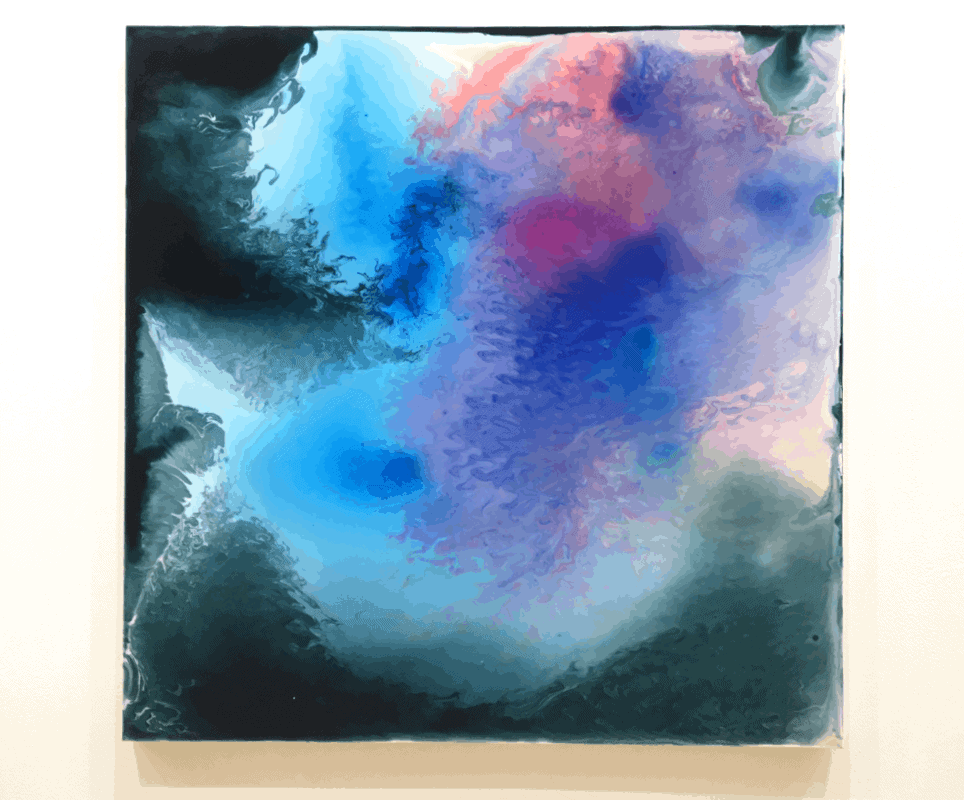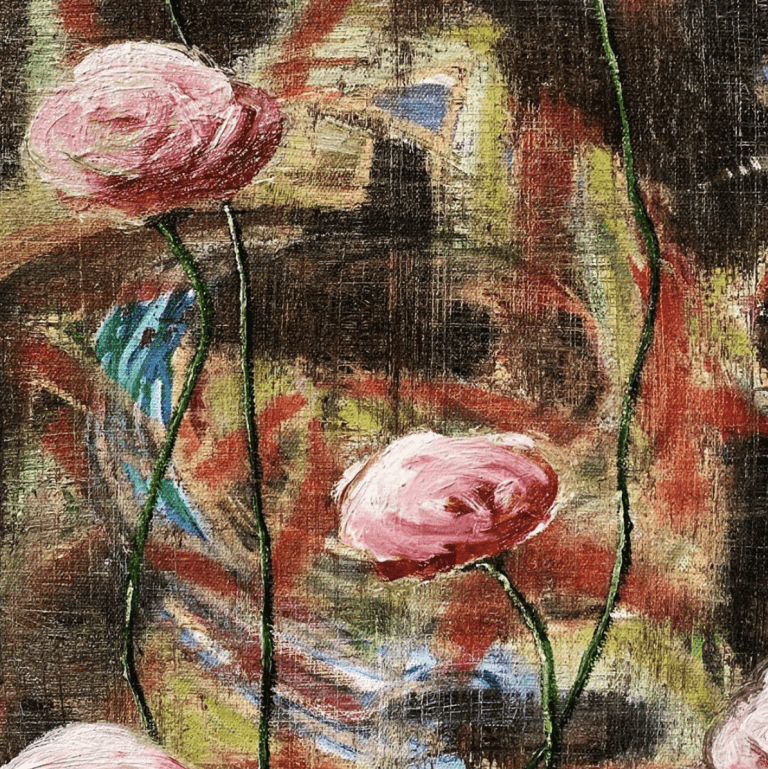The Simultaneity of Bernard Frize: Two Tokyo Exhibits
What You Need to Know About This Exhibition
Venue 1 : Perrotin Tokyo
Venue 2 : Kaikai Kiki Gallery
Timeframe: The exhibit runs from March 22 to May 8, 2018
The Artist: Bernard Frize. Born 1954 in Saint-Mandé, France
Lives in Paris and Berlin
See also: Bernard’s Website
Disclaimer:
I am not a professional critic and I am not attempting to fit into any mold here. I write what I want but try to give some background about the artist and when writing about my gallery visit, I bias toward visceral reactions.
Ok, so Bernard Frize. I don’t know much about him. He has received numerous honors including the Käthe Kollwitz Prize and has a retrospective coming up at Centre Pompidou in August, 2019. He was born in 1954, he’s a native Parisian and seems to be well-liked by the cultural gatekeepers there. His work probably gained prominence, and I’m just taking a flippant guess, on the phase change side of the cultural heamorrhage we lived through, otherwise known as postmodernism.
I embraced postmodernism as well. We usually end up embracing what holds us captive when all resistance fails. It’s called stockholm syndrome and it’s what has happened to us. Postmodernism was a heamorrhage because we embraced the death of the sublime and put vacuity on the art altar in its place… but I digress ?.
The Simultaneity of Bernard Frize
Are these two simultaneous Bernard Frize exhibits currently influencing each other? The paintings are, as far as I can tell, static (with the exception of the dust collecting on their surfaces). The influence that does occur comes as a result of independent agents (people like me visiting the shows) who are realigned as a result of crossing into the causal process of viewing the works.
Do two wet lines of paint that intersect remain free of the other’s influence? No. Wet paint A and wet paint B are most definitely influenced by one another and Frize’s quasi-industrial/painterly approach provides us with an opportunity to see the evidence of simultaneity in action.

Bernard Frize at Perrotin Tokyo
The exhibit at Perrotin gallery, which looks great from outside by the way, is comprised of prototypical Frize works, the ones following the well-trod path of grid-based paintings over resin. They possess a familiar glazed donut effect common among many blue-chip artists who are enjoying their cumulative advantages. The proles looking up from the feet of the ivory tower have a poor vantage point to be sure. Still my provoked mind was simultaneously disappointing by the profound emptiness of these paintings, and no, I’m not talking the groovy, buddhist kind of emptiness here.
Another example of our most recent era’s tendency to focus too much on concept and in effect bleed the heart of art, imho.
The only piece that broke away from the burden of intellectual consistency, even a little bit, was the one hidden away in the very back. Hats off to the installers and curators who selected this placement. It was a like a trampoline that sent you springing back through the exhibit with a touch of renewed energy.

Bernard Frize at Kaikai Kiki
If Perrotin’s exhibit disappointed me, Kaikai Kiki’s collection of Bernard Frize paintings provided levity and lightness, some adventure and imperfection, and even a sense of landscape and figure/ground. In these works, the materials and medium were largely the same but the application of these things were much more narrative, like snapshots from a trip abroad perhaps. It felt coastal, like days passing on beautiful beaches, the vortex of nautilus shells notated on familiar surfaces.
Altogether a cheerful show, one that seemed to evoke fond memories tinged with longing of times gone past.

My Neural Map of Related Artists
Don’t be distracted! Get inspired : )
To gather together a list of artists that relate to any particular living artist is at the very least, projection. But using an artist (artist’s public records are commodities, same as anybody else) as a contextual point on a map, though perhaps in bad taste, is still useful to help the public get their bearings in the space, even if it doesn’t help to “get it”.
So here goes:
“MAYBE THE ONLY WAY TO BREAK DOWN THE WALLS OF THE FAMILIAR EXPERIENCE IS THROUGH THE RE-EXPERIENCE OF THE FAMILIAR.”
“The worst thing you can think about when you’re working is yourself.”
“I believe that the artist’s involvement in the capitalist structure is disadvantageous to the artist and forces him to produce objects in order to live.”
“One is vulnerable to one’s moods; one sees something very clearly and gets excited about it, but something happens in life that throws you, or something happens that reveals something else. I always spend far more time on starting a painting because the decision of what I’m going to do in the first week is, relatively speaking, more important than what happens throughout the rest of the time, because it determines where I am going to be going.” – Saturation Point, 2015
“When an improvising musician expresses the deep-lying structures of his unconscious out there on a stage, there is a true bravery there. It’s a powerful statement,” – HuckMag, 2013
Andy Cline Art Archives
Go There =»
unbranded
Share on facebook
Facebook
Share on pinterest
Pinterest
Share on tumblr
Tumblr
Share on google
Google+
Share on twitter
Twitter





